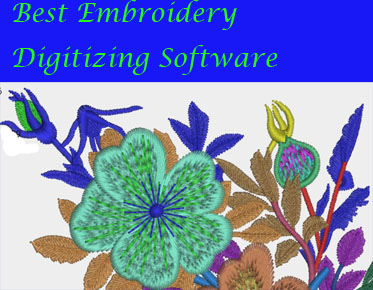How to Use Small Lettering with True Type Fonts on Embroidery Digitizing
You can't use real font in the small fonts on embroidery digitizing, it won't show up. You need to make the font thicker so that when you sew it, the stitches will show up like a regular font.
I will use the fonts and wording the customer sends me. She couldn't make it look good, so she decided to let me do it for her. This is design, this is my answer to her.
As you can see, the font is too thin.
For simplicity, you need to select an embroidered font style that is close to
the customer logo, even though you may need to edit it a little to make it look
like the customer logo. You would be better off if you could avoid using real
fonts in this case. It takes a lot of editing to make it look good, but it can
be done.
Your main problem here is that you chose the wrong font at the beginning. You must educate your customers and communicate to them that you are a professional in embroidery and that you know what makes their logo look great and what doesn't work. What looks good in print is not always suitable for embroidery.
When creating a design for small fonts, you must remember one main rule. The font columns must be at least 1 mm wide. If you are using a small font 4 mm high, you must be very careful with the font you choose. This applies to your embroidered fonts as well as real fonts. This is the minimum measurement value after adding pull comp. When you bring it in, your column can be as narrow as 0.6 mm, but after you add pull, it must measure 1 mm, otherwise it may look like a stitch when sewing, because the column is not wide enough to create satin stitch.
To see this from a correct perspective, if you use 75/11 stitches, the width of the needle when it penetrates the fabric is. 75mm. If your stitch is not 1mm wide, you will only form a thread or worse hole in your fabric, because the needle moves up and down at the same place all the time!
Another rule to remember is not to use fonts with round caps. They don't sew round. They just look messy. If this type of font is selected, it must be edited and the ends straightened. Circle capitalization is only valid if your letters are one inch or larger and you have the ability to create circles. It can definitely do it. I've done it many times, but for very small fonts, it doesn't work the way you want.
Font 1
Font 2 The third font in the figure below is too narrow and has a round end cap. This is definitely not a good font to use, but this is a font for the design of long wood that was sent to me by the embroiderer. Their clients chose this font and insisted on using it, so it was designed by Longwood University. This is the Galamonde font.
I want you to see that it can be changed, but it does require a lot of editing to make it great! When you learn that editing is enough to make such fonts sew well on any type of fabric, you can digitize them. Long wood veneer
If possible, try using basic block fonts instead of serifs. This will eliminate many problems for you and give you a bolder clean look.
This is especially true if you create letters in circles. It is always better if you use regular embroidery fonts instead of real fonts.
Real fonts always seem to have narrow
columns, and it is sometimes difficult to use them to create small fonts.


